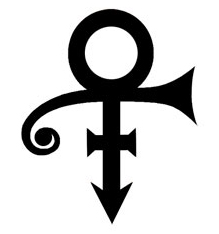After a promising headline ("Redskins ask Supreme Court to hear trademark case"), CNNMoney's description of the legal status and issues in that matter leave a lot to be desired. While I don't expect laser-like precision from lay reporters, this particular article is light on accuracy. For example, the article states:
The Redskins were told by the U.S. Patent and Trademark Office in June 2014 that the team could not trademark its name because federal law prohibits the registration of anything "scandalous, immoral, or disparaging."
I get what the writer is trying to say - and I'm not one to pick nits with lay reporters - but this is really misleading. The USPTO canceled six registered trademarks based on the (federal trademark law) Lanham Act's section 2(a) provision against registering a mark or marks that may "disparage" others. While the federal trademark law does empower the USPTO to prevent registration of such marks, that does not mean that the team cannot "trademark" the "name". The posture of the Washington Redskins' case is that six registrations of the many marks that the organization possess (either registered or unregistered) have been cancelled from the federal principal register; legally, the organization may (and still does) use the six marks as it has before, since the cancellation of the registered marks has no impact on the usage of the marks in commerce.
As egregious is this sentence:
Revoking its trademark does not mean the Redskins won't be able to keep its name, but losing trademark protection would allow anyone to sell goods with the Redskins name or logo without paying the league as they now must do.
Despite the cancellation of the six registered marks (pending the likely consolidation of appeals / writ for certiorari of the "REDSKINS" and "THE SLANTS" cases), the organization has NOT lost trademark protection. In fact, the value derived from a trademark springs from the use of the trademark, not the registration. And registration is not a requirement (unlike copyright) for adopting, using, and enforcing trademark rights. Accordingly, the organization has not lost any of its substantive trademark rights and protections, and any would-be business thinking that it can pilfer these marks for t-shirt or apparel applications would quickly find itself in the cross-hairs of a trademark infringement suit.
In particular, the Lanham Act specifically sets out that unregistered trademarks are protected from the likelihood of source confusion (section 43(a)) in a manner very similar to the protections extended to registered marks. Although the procedure and proof required to demonstrate to a court/jury that a mark enjoys such protection is slightly higher than if the mark was registered, for lack of a government issued certificate that carries some weight, if adoption, usage, maintenance, and overall-ownership is so demonstrated, the analysis for the likelihood of source confusion is nearly identical whether the mark is registered or unregistered (with some variants between circuits on the number of factors considered in a likelihood of confusion analysis).
Kudos to CNNMoney for revealing that the football organization is seeking a consolidation of its case with "THE SLANTS"; the impact on the organization's appeal to the Fourth Circuit Court of Appeals (pending) is unclear, though.
 One of the first uses of this icon was in the body shape of a Prince guitar. Later, this symbol was the subject of several trademark applications that matured into federally registered trademarks for a variety of goods and services. Those four registered marks continue in use.
One of the first uses of this icon was in the body shape of a Prince guitar. Later, this symbol was the subject of several trademark applications that matured into federally registered trademarks for a variety of goods and services. Those four registered marks continue in use.